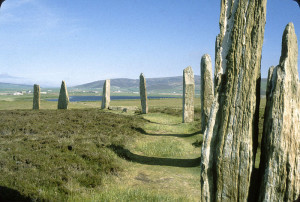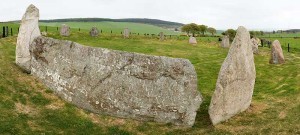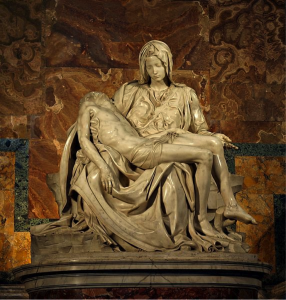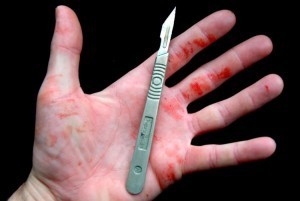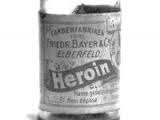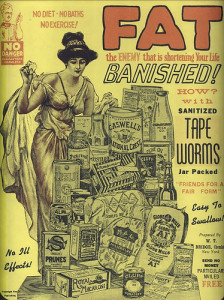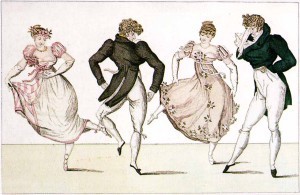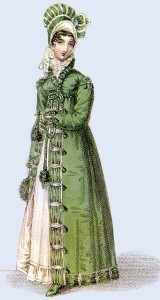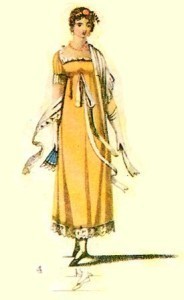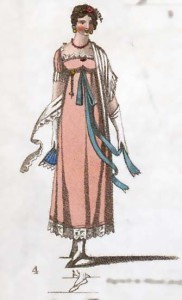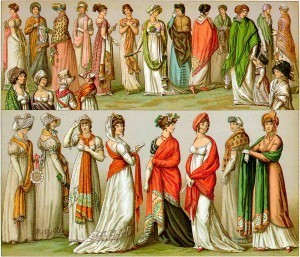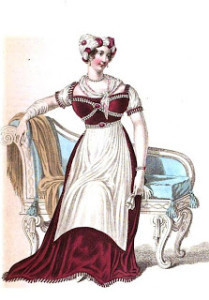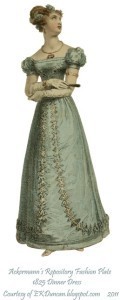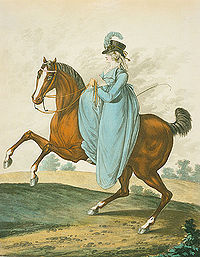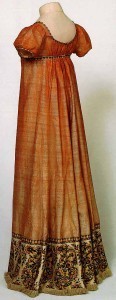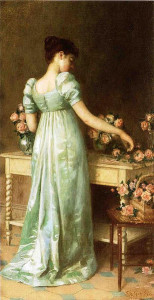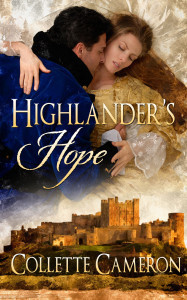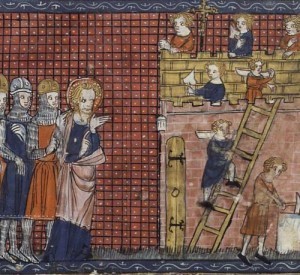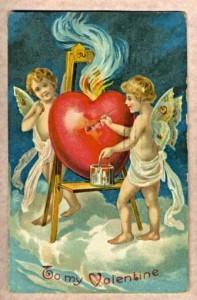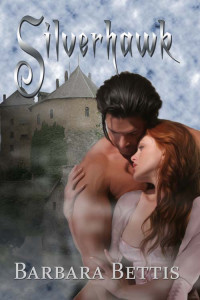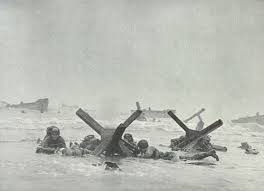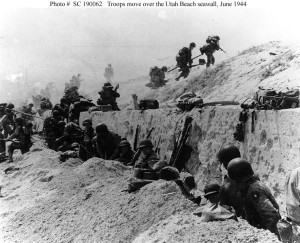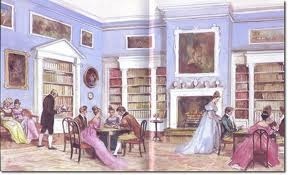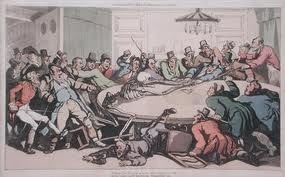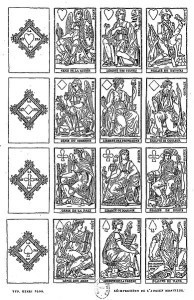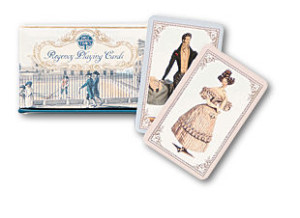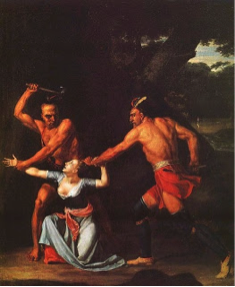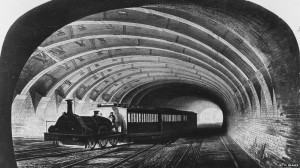L.B. Joramo's Blog, page 6
March 12, 2014
Scotland Ancient Rock Formations by Collette Cameron
Hello! Once again I am honored to have historical fiction writer Collette Cameron writing on my blog! Squee! She is writing about the ancient rock formations in Scotland, which utterly fascinated me. This part of history–druids, astrology, etc.–is amazing! For your reading enjoyment I’ve added some mystical Celtic music to listen to. Please click here to listen. Now, here is Collette!
Uncovering Scotland’s Ancient Rock Formations
By
Collette Cameron
I was fortunate to visit Stonehenge many years ago, and the circular formation of those huge stones impacted me in such a way, I’ve never forgotten them.
Over the years I’d heard about other circular stone formations, but it wasn’t until I started writing my current work in progress, Virtue and Valor, set partially in 1818 Scotland I decided to research them.
My Scottish heroine is fascinated with the ancient structures, and naturally when Isobel demands I acquire information for her, I rush to do her bidding. I don’t know about you, but my characters are rather demanding at times.
Anyway, I dutifully perused the Internet and came across the Standing Stones of Callanish.
These giant slabs of granite were used to track lunar activity 5000 years ago. I can’t imagine how ancient peoples managed to move something that humongous.
Cnoc Ceann a Gharraidh (Saint Sandstones) and Cnoc Fhillibhir Beheag are two more structures within the Callanish group and are equally marvelous.
The Ring of Brodgar is a large henge and stone circle (originally 60 stones, now a scant 27). I find it fascinating that scientists have been unable to date it, though it is thought to be between 2000 and 2500 years old.
Another intriguing stone structure is the Easter Aquhorthies Stone Circle. Unlike the upright, sanding stones of Stonehenge, the Standing Stones of Callanish, or the Ring of Brodgar, the Easter Aquhorthies, like 100 similar formations in Scotland, has a stone lying on its side, hedged by two upright stones. Thought to be about 4000 years old, their use is unknown.
You’d think with so many of them perched about Scotland, someone would have figured that out by now.
There are also several lone, standing stones in Scotland, one of the most famous being the Aberlemno Sculpted Stones, including the Serpent Stone. The purpose for these Pictish symbol stones is unknown.
Hubby and I are taking a trip to Scotland in the summer of 2015. You can bet we’ll be visiting some of these amazing sites.
So there you have it; delving into my heroine’s obsession with Scottish history. See what we authors do to make sure our readers get accurate historical details?
What ancient symbolic structures or formations would you like to see?
Resources:
http://en.wikipedia.org/wiki/Ring_of_Brodgar
http://www.historic-scotland.gov.uk/propertyresults/propertydetail.htm?PropID=PL_120
http://en.wikipedia.org/wiki/Aberlemno_Sculptured_Stones
All images are courtesy of Wikimedia Commons
March 5, 2014
Happy Birthday, Michelangelo, by Alanna Lucas
This is MY birthday month, but I share it with many of the greats, including Michelangelo! I have historical fiction writer Alanna Lucas on my blog today, writing about the amazing artist! For your enjoyment, I’ve included some Renaissance music. It might sound a bit somber at first, but wait. It’s lovely after a minute. Clear here to listen. And now, here is Alanna!!!
Buon Compleanno Michelangelo!
Today marks the 539th anniversary of the birth of Michelangelo Buonarroti. Born on March 6, 1475 in Caprese, Michelangelo grew up in Florence, the heart of the Italian Renaissance, whose native sons included Dante, Donatello, and Giotto.
Although a master in the three visual arts—sculpture, painting, and architecture—Michelangelo thought of himself as a sculptor first. He had once remarked to Giorgio Vasari—a friend and biographer—that ‘with my nurse’s milk I sucked in the hammer and chisels I use for my statues.’ So passionate about his statues, upon hearing a visitor tell another that the Pietà was executed by Cristofero Solari, Michelangelo shut himself in the Chapel of Santa Petronilla- where the Pietà was housed at the time—and carved his name in Latin on the diagonal band that drapes between the Virgin’s breasts. This was the only work of art where he signed his name.
I have had the privilege of seeing a number of Michelangelo’s sculptures in person. Although each possesses a different quality that I find fascinating, one of my favorites is David.
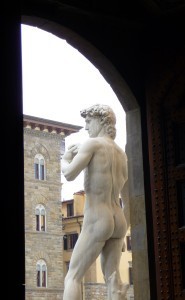
Alanna herself took this picture!
Unlike his predecessors Michelangelo did not portray David as the triumphant youth with sword in hand, the head of Goliath, the Philistine giant, at his feet. Instead, Michelangelo chose the moment before David went into battle, armed with only the sling and a rock. David is portrayed as a powerful male whose external beauty matched his inner strength and determination. Relaxed in a Contrapposto pose, he gazes into the distance with confidence.
Originally intended for one of the tribunes high atop the Duomo, the large hands and oversized head would have appeared in proportion to the rest of his body when viewed from the ground looking upwards. The David was instead placed at the entrance of the Palazzo Vecchio, where it stood for more than 350 years.
In August of 1873, the David was slid on rails over the course of three days from its unsheltered outdoor location at the Piazza della Signoria to the Accademia Gallery, less than a couple of miles away. However, the Tribuna of David had not yet been completed and would remain unfinished for the next nine years.
During the fourth centenary festivities of Michelangelo’s birth that were held in Florence on September 13-16, 1875, the unfinished Tribuna was draped with curtains and the David was removed from its protective wooden scaffolding and put on display, becoming one of the most important exhibitions of the festivities. When at last the Tribuna was completed, the David was positioned under a circular skylight, illuminating the statue. The David’s story does not end here.
During WWII great efforts were made to protect valuable artwork throughout Europe. Priceless works of art were removed from churches and museums; fragile sculptures were packed in sand, huge canvases were taken out of their frames and rolled, and even stained glass windows were removed when possible. However, the task was considerably more complicated for immovable objects. Various methods of protecting these works and monuments had to be implemented. Frescoes were supported with structural bracing, boards, and sandbags. In the case of the David, along with Michelangelo’s Slaves, which were also on display in the Accademia Gallery, a system of internal scaffolding and sandbags encased in brick was created to encapsulate and protect. Despite the devastation that Florence endured, the David along with the Slaves survived the war unscathed.
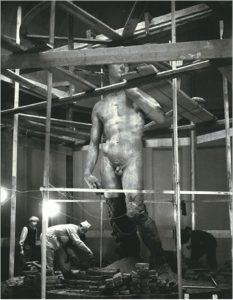
During WWII sculptures that were too large to move were protected by internal scaffolds and sandbags, and then encased in brick.
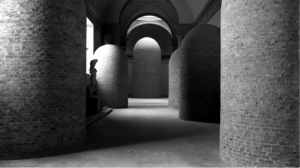
View of the entombed sculptures in the Gallery of the Slaves and the Tribuna of David
On September 15, 1991 a deranged man smuggled a hammer into the museum and broke part of the David’s left toe, claiming that a painter’s model from the 16th century ordered him to commit the act of vandalism. Fortunately, all fragments were recovered and the sculpture was repaired. Michelangelo’s David remains to this day one of the most popular tourist attractions in Florence.
Thousands flock to Italy each year to pay homage to one of the most revered and famous artists of the Renaissance. Whether standing under the enormous dome of St. Peter’s in Rome, staring upwards in awe at the Sistine Ceiling, or imagining Atlas—one the Slaves from the Gallery of Slaves—lifting the weight of its marble cocoon high above his head, Michelangelo’s oeuvre and popularity has stood the test of time.
View of the entombed sculptures in the Gallery of the Slaves and the Tribuna of David
February 26, 2014
19th Century Medicine by Elaina Lee
I am SO excited to have author and designer Elaina Lee here on my blog! She is one of the most helpful and fantastic people I’ve encountered in this business. Her post is so much fun to read through, so I’ve included this fun music for your enjoyment. Click here to listen while you read through, but please excuse the long intro. And now here’s Elaina!!!
Medicine’s past and its not so medical qualities…
In the wake of recovering from what felt like the plague, I decided to do a search for silly medical practices. I own a book on Victorian medicine and also on the history of medicine, both very fascinating reads. How far we’ve come since the days of leeches and doctors not washing their bloody hands (they were badges of honor, the very notion of washing that filth away, how dare it be considered!) is truly astounding.
However, I couldn’t help but continue to be shocked at the many ‘cures’ to ailments that used to be okay! Like giving your teething infant heroin. HEROIN! Yes, that’s correct. A tonic was made for mothers to give their fussy toddlers that had opium, heroin and codeine. Sometimes all three. I can’t even begin to imagine the mess that created… a child suffering through withdrawals and the only way to appease him is to give him, well, more of his teething tonic. Scary! Or that parents would willingly take their hormonal teenager to a psychologist to have a lobotomy performed. Now, granted, I can see the benefit of making your teenager an emotionless zombie (we all think it, even if we don’t admit it), but those times, like teething, are thankfully fleeting. I’ll let the teenager keep his brain, thank you very much.
Want to be thin? Take a sanitized tapeworm in a pill! What about clear skin? Just pee in a cup and use it to wash that acne away (not making that one up, I swear!). Feeling under the weather? Here, take a teaspoon or five of mercury. Still feel bad… oh worse you say? Oh, sorry, here have some more of this awesome silver stuff! I am truly astounded that today, as a 21st Century woman, I have more medical knowledge than a doctor practicing a hundred years ago. There, feel smart. I surely do!
So I think I’ll keep taking my decongestants and allergy pills to feel somewhat human and hope in a hundred years they aren’t gasping at the chemicals I’ve been taking…
What medical practices from the past terrify and astound you?
Also please check out Elaina’s author website at http://www.elainalee.com and her design website at http://www.forthemusedesign.com
February 19, 2014
A Regency Palette by Collette Cameron
Hi, all! Today I have again Collette Cameron writing about the popular colors that were worn during the Regency period. As someone who loves to use all the colors of my crayon box, I loved this piece. For your enjoyment, I’ve included some Regency era music (and dancers) to listen to while you read this wonderful post. Click here for the music. And now here is Collette with more . . .
A Regency Palette-Colors of The Regency Era
It’s ironic how many times I’ve had to look up Regency Colors while writing my historicals.
You’d think they’d stay in my head! Being a stickler for historical accuracy, it wouldn’t do to describe a Pomona green gown as sage or moss colored, and to call a butter-colored gown yellow would be blasphemous; better to call it primrose or jonquil. I’ve used all of those colors in my books.
So today, I’m simply going to list some popular colors and images of Regency attire.
It’s interesting to note, that while some colors appeared on nearly every site I’ve visited during my research (Pomona green, Jonquil, Puce), others are only mentioned on that particular site.
Jonquil: Yellow, as in daffodil
Primrose and evening primrose: Both shades of yellow. Primrose is slightly lighter than Jonquil, while evening primrose is more lemony or canary yellow.
Puce: a purplish pink. Puce means flea in French and is thus named for a flea gorged with blood. Eewww!
Pomona Green: A cheery apple green
Coquelicot-sort of a poppy red.
Emerald Green: Not the deep, dark green associated with the stones but more of a bluish-green, almost aqua.
Cerulean Blue: A muted, almost greyish blue, and *gasp* not popular during Regency times. Blue wasn’t all that popular at all, though lavender was. I wouldn’t have done well in that era considering my obsession with cobalt and royal blue.
However, I did find a wonderful resource, History Place Blog Spot which has an amazing list of color names, an example of the color, and the origin too. Several blues are listed there, so I can breath a bit easier.
Some of my favorites from that list include:
Blossom-a light pink
Bottle Green-just like you’d think!
Mazurine Blue-be still my heart. First time I’ve heard of this color. A splendid mixture of indigo and violet. I think it may be my new favorite!
Slate- A mix between gray and lavender.
I found these Regency Colors listed on Romance Reader at Heart. The names are fabulous!!
Popular Regency Colors
APOLLO: bright gold.(1823)
AURORA: chili-colored. (1809)
AETHERIAL: sky blue. (1820)
AZURE: sky blue. (1820)
BARBEL: sky blue. (1820)
CAMELEOPARD : French beige. (1825)
CLARENCE: sky blue. (1820)
DEVONSHIRE BROWN: mastic (1812)
DUST OF RUINS: squirrel. (1822)
EGYPTIAN BROWN: mace. (1809)
ESTERHAZY: silver grey. (1822)
ISABELLA: cream. (1822)
LAVENDER: between heliotrope and parma. (1824)
MARIE LOUISE: calamine blue. (1812)
MEXICAN: steel blue. (1817) MORONE: peony red. (1811)
POMONA: sea green. (1811)
PRINCESS ELIZABETH LILAC: Alice blue . (1812)
RUSSIAN FLAME: pale mastic. (1811)
SPRING: Cossack green . (1810)
TERRE D’EGYPTE: brick red.(1824)
VIOLET: parma violet
Another great site that lists several colors I’d not heard of before was History Ink Blog Spot.
Here are a couple examples:
Bishop’s blue-again a purplish blue
Fawn-a pale, yellow-tan
Pompeian Red-deep red
Nakara-pearlish in color
The most popular color during the Regency Era according to several sites I visited? Puce.
Take a look at my Regency Fashion page. I’ve dozens of sites listed if you want a better idea of what colors were worn during the era.
I used all of these sites below for this post and encourage you to visit them. They are loaded with a wealth of information.
• http://sarahs-history-place.blogspot.com/2011/09/colours-used-in-regency-and-georgian.html
• http://www.janeausten.co.uk/colours-of-the-regency/
• http://hibiscus-sinensis.com/regency/colors.htm
• http://romancereaderatheart2.com/regency/timeline/index.html
• http://historyink.blogspot.com/2012/04/list-of-regency-colors-for-clothing.html
• http://www.pemberley.com/janeinfo/ppbrokil.html
All images are courtesy of Wikimedia Commons or other public domain sites.
Here are the covers of Collette’s wonderful books! By clicking on them, it will take you to Amazon to check out the book more thoroughly!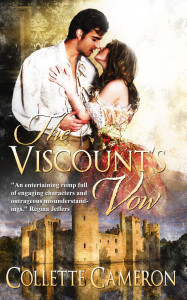
Please visit Collette at her website.
Or at Twitter.
Or at Facebook.
Or at her spectacular blog!
February 12, 2014
The History of Valentine’s Day by Barbara Bettis
Happy Valentine’s Day to everyone out there! Valentine’s has always been one of my favorite holidays. I love giving out cards and chocolates and being reminded of romance. Okay, I love love. I’m a nut. What can I say? Anyway, I’m so pleased to have historical fiction writer Barb Bettis on my blog today, writing about the history of Valentine’s. She is giving away a beautiful Valentine bookmark handmade by Nicole Lavadure and a box of candy! All you have to do is leave a comment. My son, my youngest Valentine this year, will pick the winner at random, so please do leave a comment! For your enjoyment I’ve posted some of my favorite mushy music to accompany the blog; please click here to listen. And now, here’s Barb . . .
Medieval Valentines? Sort of.
Valentine’s Day is nearly here. Time to order flowers, candy, send cards and prepare to celebrate the day traditionally set aside for love. But when did that tradition start?
I wish I could give you a summarized, sanitized, glamourized answer, but I love accuracy too much to do so. The answer is—unclear.
Tradition says the day was named for Valentine, an early Christian priest martyred (this is true) for his part in—and that’s where the story become murky. The church records three Valentines, all living around the third century during the reign of Emperor Claudius II. One priest Valentine was martyred in Africa. He’s not so much connected with our tale. That leaves Valentine, a priest in Rome, and Valentine, Bishop of Terni.
One story says a priest named Valentine helped Christians escape Roman persecution. Still a another story says a priest named Valentine secretly married Roman couples to escape Claudius’s edict banning marriage for soldiers (they were better military men if they didn’t worry about wives and children, the emperor thought. However, one historian says this edict never existed.)
One of these two Valentines, while imprisoned, is said to have 1.) cured his jailer’s daughter of blindness and/or 2.) fallen in love with her. Whatever the reason, he is said to have written her a letter on the eve on his execution, signing it “your valentine.”
Both Valentines are said to have been martyred on Feb. 14 (different years). Since the church usually celebrated a saint’s birth or death, that date became common.
Some reports link Valentine’s Day to a Roman festival of Lupercalia—held Feb. 13-15. At that time, pagan priests would soak skins in the blood of a sacrificed goat (symbol of fertility) and with it slap women (and fields) to encourage fertility. Then men would draw women’s names from a bowl for their mate during the following year.
Did an early pope, hoping to link Christian holidays to pagan ones thus encouraging the spread of Christian belief, declare celebration of St. Valentine’s Day coincide with that pagan festival? Some sources say so. Ironically, other sources are vehement that it Wasn’t So. ☺ (It does make a good story, though.)
This post is on Medieval Valentines, and this all happened in the 4th Century, the early days of the Church. How, then, did Valentine’s Day become commonly accepted ? Was it also linked to early spring mating of birds, a belief popular in many rural areas?
Jack B. Oruch says the links of romantic love and Valentine’s Day was first recorded in Geoffrey Chaucer’s Parlement of Foules (1382). The poem celebrated Richard II and Anne of Bohemia’s engagement contract in 1381. (They were married at 15.)
“It says: For this was on seynt Volantynys day
Whan euery bryd comyth there to chese his make.
(Trans:”For this was on St. Valentine’s Day, when every bird cometh there to choose his mate.”)”
The first actual recorded ‘Valentine’ (that has been found, at least) is attributed to Charles, Duke of Orleans, who wrote it to his wife about 1416 while he was imprisoned in the Tower of England after his capture at the Battle of Agincourt. Here it is:
French (Original)
Je suis déjà d’amour tanné, Ma très douce Valentinée, Car pour moi fûtes trop tard née, Et moi pour vous fus trop tôt né. Dieu lui pardonne qui estrené M’a de vous, pour toute l’année
Je suis déjà, etc. Ma très douce, etc. Bien m’étais suspeçonné, Qu’aurais telle destinée, Ainsi que passât ceste journée, Combien qu’Amours l’eût ordonné.
Je suis déjà, etc.
English
I am already sick of love, My very gentle Valentine, Since for me you were born too soon, And I for you was born too late. God forgives he who has estranged Me from you for the whole year.
I am already, etc. My very gentle, etc. Well might I have suspected, Having such a destiny, cousin Thus would have happened this day, How much that Love would have commanded.
I am already, etc
(“French Poems”)
As for valentines in English, the earliest discovered (so far) can be found in Margaret Brewes letters to her future husband, John Paston, “my right well-beloved valentine.” They are part of the Paston Letters collection. A link to the entire letter is below.
Well, there you have it. We can’t really be sure exactly for which Valentine the day was named, or even how the romantic element of it persisted and grew over a thousand years, from the time of the Sts. Valentine martyrdoms, to Chaucer’s mention of the day in a romantic context in 1382, to the Duc d’Orleans’ Valentine to his wife and a 15th Century lady to her betrothed.
Perhaps it just goes to show the enduring need to celebrate the feeling that binds us romantically to another.
But you know, the idea of romantic love goes even further back—to Greek mythology—to that arrow-wielding god Cupid and his mortal lady, Psyche, and a love that transcended time. But that’s another story ☺
Happy Valentine’s Day. And may we continue to celebrate this timeless tradition of love in our writings.
Sources: http://www.americancatholic.org/features/valentinesday/origins/asp
http://www.luminarium.org/medlit/paston.htm http://news.bbc.co.uk/2/hi/uk_news/642175.stm for full text of the Brewes letter.
http://www.anglophone-direct.com/FRENCH-POEMS-FOR-VALENTINE-S-DAY http://www.npr.org/2011/02/14/133693152/the-dark-origins-of-valentines-day
http://www.history.com http://en.wikipedia.org/wiki/Valentine%27s_Day
(I know. I’m sorry. But it has good sourcing.)
The photos are from Wikipedia.
Here is a blurb from Barb’s amazing novel, SILVERHAWK:
He’s everything a proper lady should never want; she’s everything a bastard mercenary can never have.
Visit her at: http://barbarabettis.com and www.barbarbbettis.blogspot.com
https://www.facebook.com/BarbaraBettisAuthor
www.twitter.com/BarbaraBettis
Amazon: http://amzn.to/1bQX3td
The Wild Rose Press: http://bit.ly/1bM6ua2
February 5, 2014
D-Day: 70th Anniversary by Alanna Lucas
Today I’d like to welcome Alanna Lucas to my blog! She is an amazing historical fiction writer, and today is talking about D-Day. WWII was the first war I was interested in studying when I was a teenager, mainly because my dad was a history buff about it. But through the years it has held my intrigue for the men who fought it. For your enjoyment you may click here to listen to some Glenn Miller while reading through her post. Without further ado, here is Alanna!
As the 70th Anniversary of D-Day approaches, it is important to remember that June 6th, 1944 is one story amongst the triumphs and tragedies that the allies endured on their path to peace. The tremendous personal sacrifices given by so many men, women, and children during this time should never be forgotten.
This was a generation of teenage boys who lied about their age in order to enlist and serve their country. They did not need to be reminded that the price of freedom was hard earned and involved the loss of many human lives. All understood that they were fighting to maintain those cherished core values of the free world. Most of these men were ordinary individuals, yet many performed in extraordinary ways. It is no wonder that those who contributed so much to the war effort are referred to as “The Greatest Generation.”
The path to ending the war involved tough decisions, with real consequences. Ike and Churchill’s planning and preparation for this day of days involved complex strategies, which depended greatly on intelligence gleaned on enemy positions and resources. The vast array of personnel involved in achieving these goals goes well beyond the U.S. and British military. The warships alone contributing towards the D-Day invasion included Canadian, Polish, Dutch, Norwegian, French, and Greek vessels, in addition to the U.S. and Royal Navy. French and other resistance personnel executed plans to further disrupt German strong holds, while providing critical information to the allied forces of enemy positions.
Despite many months of planning, one element that could not be controlled by the allies was the weather. The original date set for the invasion into Normandy was June 5th. However, due to poor weather conditions it was delayed 24 hours. This tipped the element of surprise in favor of the allies, since the Germans were under the belief that four days of good weather were needed to launch the attack. Yet the allies gambled on a narrow window of predicted weather improvement for their opportunity. On June 6, 1944, the gamble paid off.
Although the weather improved, rough seas complicated the operation. After a heavy breakfast, those crossing the channel in the landing crafts were overwhelmed with seasickness caused by the extremely rough seas. But this was only the beginning of their obstacles.
The troops landing were met with machine gun fire from the MG-42, the most advanced rapid-fire machine gun at the time. This devastating weapon cut into the heart of those landing on the Normandy beaches. These young soldiers- the average age was twenty-two- were quickly shocked into reality as they witnessed their comrades cut down by the devastatingly effective weapon fired from concrete bunkers. Many jumped over the side of the landing crafts into the water to avoid certain death, only to struggle for a breath of air as they were being pulled down by the weight of their battle gear.
Once ashore, they had multiple challenges to overcome. The most devastating was Hitler’s Atlantic Wall filled with land mines, German pillboxes directing constant machine gun fire, land obstacles, barbed wire, and other enemy threats. The infantry learned quickly that bad decisions or bad luck meant death or serious injury. Yet, despite being surrounded by this chaotic scene, the allied troops pushed forward onto the beaches of Utah, Omaha, Gold, Juno, and Sword.
The cliffs of Pointe-du-Hoc was the objective of the 2nd Ranger Battalion, an elite group who had trained to scale this treacherous terrain and destroy six German 155mm cannons. These cannons presented a serious threat to the Allied invasion, with a range of up to 25,000 yards. The Rangers had specialized tools to scale the cliffs up to 100 feet high, including a rocket to launch rope and grapnel on the slick face of the rock. The Rangers had trained for this moment many times in previous months. However, their equipment had suffered water damage from the rough channel crossing. To their dismay, the launched grapnels only traveled a fraction of their normal distance, due to the added water weight. The determined and resourceful Rangers avoided the German machine gun fire and found their way up the cliff. The highly trained unit moved topside and found that the 155mm cannons had been replaced with telephone poles.
This did not deter the Rangers, who tracked the movement of the cannons and fought their way to a camouflaged hideout, where the guns were hidden. Amazingly, the cannons were not under guard. The Rangers used thermite grenades to destroy the cannons, but not without heavy casualties.
Earlier in the day, the 101st Airborne were finally given the green light to fulfill their mission, which was two years in the training. A massive force of 432 C-47 aircraft flew these brave young men at low altitude and tight formation across the English Channel. As they approached their designated drop zones, the low flying aircraft, which was not armored to guard against the German anti-aircraft weapons, presented an easy target. The C-47 pilots compensated for this disadvantage by flying at higher rate of speed, which was not optimal for the paratroopers about to jump.
Organization broke through the chaos inside each plane, as the jumpmaster ordered the paratroopers to stand ready for an equipment check. Meanwhile, all hell broke loose outside with machine gun fire, anti-aircraft shells and flak entering the aircraft. The primal instinct to leave the flying death traps was a highly motivating factor. The paratroopers chose to leap into the dark peril filled with a hail of fire power, descending at a high rate of speed, much too low, and far from their designated drop zone.
The Airborne wore much of their equipment on a “leg bag.” This system added 40 to 70lbs of weight that was attached to a rope and fastened to the trooper’s leg. The pitfalls of this system were quickly learned on the D-Day jump, where many of the paratroopers suffered injury. Much of the equipment was lost during the drops and the troopers found themselves alone, lost in the wrong location, and poorly equipped.
The preparations for the D-Day assault cannot be underestimated and success was achieved through the contributions of an armada of vessels, various landing crafts, airborne landings, and air support. Military intelligence, deception, and diversions were utilized to mislead the enemy and gain advantage. This truly was one of the greatest military achievements.
It is estimated that of the 150,000 allied forces that arrived at Normandy on June 6, 1944 4,572 were killed. Each man who contributed towards the D-Day effort fought to maintain freedom and ultimately made personal sacrifices. These efforts represent the pinnacle of selfless service seen in the 20th Century. The U.S. Department of Veterans Affairs estimated that 1.7 million World War II veterans were still alive in June 2013, yet this number is rapidly declining, with approximately 550 WWII veterans dying each day. This June 6, the 70th anniversary of D-Day, take the time to honor those who sacrificed so much to preserve freedom throughout the world.
January 22, 2014
Playing Cards-Regency Style by Collette Cameron
I’d like to welcome Collette Cameron to my blog! She’s writing about playing cards, and as someone who’s spent much of my time with cards, and having the time of my life, this post was enlightening! For your enjoyment you can click here and listen to some Regency music to accompany your reading through the post. Here is Collette . . .
As anyone who reads or writes Regency is aware, card games were a very popular past time. Whether it be loo, hazard, whist, piquet, or vingt-et-un, and literally scores more, the haut ton liked their playing cards as well as their gambling.
Card parties were all the thing, as were card rooms at various assembly rooms and balls. Card games were played at picnics, long carriage rides, quiet evenings at home . . . truthfully, just about any time a diversion was needed. And let’s not forget gaming “hells” or gentlemen’s clubs such as White’s or Brooks’s.
But this article isn’t about gambling or the card games. It’s about the playing cards themselves. For one of my Regencies, I had to research if playing cards in 1818 could be customized. Depending on what site I visited, I found contradictory evidence, so please understand, this is only a novice’s findings.
The English refer to a set of playing cards as a pack, whereas Americans call them a deck.
The earliest known evidence of playing cards games has been traced to 9th China, and decks containing four suits to 12th century China, though I read more than once that etymological evidence suggests playing cards were Moorish (Arabic) in origin. I also found several references to playing cards and the Romans. The English pattern we are accustomed to, spades, hearts, clubs, and diamonds, first appeared in France in around 1480, though some sites suggested 1470 was more accurate.
The Europeans are credited with giving cards their faces, and the number of cards in a deck varied from 48-56 until the late 15th century when 52 cards became the standard. The Joker wasn’t introduced until the 1800s by Americans. Prior to widespread production, cards were stenciled and hand colored. Credit for the first printed cards is attributed to Germany in the 15th century, but it wasn’t until the mid 1830s that cards were mass produced in London.
I’ve always thought of a deck of cards as inexpensive entertainment, but that wasn’t necessarily the case. The backs of playing cards weren’t standardized, and if one had nice, deep pockets, cards could be customized. It was expensive since the cards were hand painted. Gambling clubs often had their own cards printed to prevent fuzzing, or the marking of cards, and one was expected to provide new cards for each table at card parties and the like.
One site said that playing cards had blank backs until the 1800s so they could be used as calling cards, but my research showed many, many cards with patterns engraved, stenciled, or painted on them.
So, while playing cards was almost universally obsessive during the Regency Era, the cards themselves were rather more unique. I included a couple links below that have some lovely images of vintage playing cards.
Enjoy!
Resources:
E.K. Duncan-My Fanciful Muse; http://historicalromanceuk.blogspot.com/2012/08/play-at-cards.html
http://www.ekduncan.com/2011/06/regency-era-pictoral-playing-cards.html
Historical and Regency Romance UK; http://voices.yahoo.com/10-things-didnt-know-deck-playing-6459412.html?cat=37
White Knuckle Cards; http://whiteknucklecards.com/history/briefhistory.html
The World of Playing Cards; http://www.wopc.co.uk/history/
Wikipedia; http://en.wikipedia.org/wiki/Playing_card
The International Playing Card Society; http://www.i-p-c-s.org/history.html
January 8, 2014
A New Theory of Jane McCrea’s Death
Being a military historian has many advantages. I not only can tell people about the invention of gunpowder, and how it changed the world, but also how to make it! However, lately I’ve run into a few snags. I’ll try to be brief about my latest snag, because more than anything I’d like to know about protocols that would be considered social rather than military, yet it would have a hefty military meaning.
In June, 1777 Miss Jane McCrea was killed. Many historians claim her death was a turning point for the Patriots during the American Revolutionary War. They state that because she was so savagely killed, the colonists began to enlist for the Patriot side by the droves and as a consequence, the Patriots had a major victory at the Battle of Saratoga, which many state was the beginning of the end for the British during the war. And when taking a look at the most famous painting of Jane McCrea’s death by John Vanderlyn, one can’t help but feel that something awful happened, and that the Patriots would have served out justice for her.
John Vanderlyn’s “Massacre of Jane McCrea”
However, as careful research indicates much of Jane McCrea’s death is myth. Of the many historians that have sought out the truth in McCrea’s death, my favorite is John Koster. He tries to write a more truthful version of events. Here are some of the facts: McCrea’s parents were both dead, so her older brother, a Patriot officer, was her guardian. Apparently McCrea had been courting a David Jones, a Tory-Loyalist officer, before and during the war, and it is about this time that they have decided to marry. Well, as anyone can guess, McCrea’s brother was not okay with the marriage, and ordered her to live with him, rather than the friend of the family that McCrea had been staying with, a woman by the name of Sarah McNeil. Historian John Koster used Mrs. McNeil’s testimony for his research.
So there they are, two star-crossed lovers, divided by a war and a domineering older brother. What else is a man to do other than kidnap his bride to-be? Yes, Jones paid a small band of Native Americans to kidnap his fiancé from the clutches of her older brother. However, McCrea’s older brother had a very similar idea, and sent a small band of Patriot soldiers to capture the elusive Jane on the same day.
The Native American, Mohawk, warriors arrived first, and easily enough had McCrea with them. However, McNeil insisted she chaperone the young lady to her fiancé. McNeil testified that soon enough the Patriots began to shoot at them, and the Native Americans protected her with their own bodies on several accounts. McNeil said she saw the Mohawks do this for McCrea too, until they had Jane on a horse. Then they sprinted away. The horse the Native Americans had for McNeil would not budge, because McNeil was a bit on the heavy side apparently. Slowed down by the not moving horse, McNeil and McCrea are separated. But she saw in the distance McCrea’s death. The Patriots shot Jane McCrea.
The other witnesses of McCrea’s death were the Mohawk warriors, of course, who told the same version that McNeil related. Further when McCrea’s body was exhumed for a reburial, there were three bullet wounds in her skeleton, one through her skull. There was no sign of her skull being struck by a tomahawk. So why then is there such a wide discrepancy between the witnesses and the myth?
Well, I have a theory that I’d love some of my historian friends to help out with. You see, British General John Burgoyne was one of the first to write that McCrea died at the hands of the Mohawks; however, he said that it was an accidental death. I wondered why he would do such a thing? Why blame the Native Americans at all? Wouldn’t it make more sense to blame the Patriots for shooting McCrea?
But then I realized that Jones, McCrea’s fiancé, had committed a huge social no-no by kidnapping his Jane. But how big of a no-no this was, I didn’t know. Here is what I’m wondering: in the late eighteenth century to Regency times and probably much later, is kidnapping a wife to-be a crime? I’m guessing it is, or if it isn’t then it must be punishable by social rules. Could McCrea’s older brother demanded justice from Jones in the form of a duel? Or could he have Jones hung? Shot?
My theory is in order to deflect blame from Jones, Burgoyne decided to lay blame on the Native Americans, even calling Jane’s death a savage passion, but still an accident. Could my theory have any merit? Could Jones have faced punishment from McCrea’s older brother? If so, how harsh of a punishment?
As always, thank you for reading! And I’m looking forward to having many more historical discussions in the future!
December 18, 2013
Author Lana Williams Talks about Victorian Times
I’d like to introduce a wonderful writer but also one of my greatest friends, Lana Williams, to my blog today!
Thank you so much for having me, Lani! I enjoy reading your blog as it always contains such interesting discussions on history. Today, I’d like to talk about some aspects of London in the mid to late1800s that drew me to set my latest release, Unraveling Secrets, in that time period.
While we are used to rapid changes in technology these days, it must’ve been quite an adjustment for those experiencing it after long periods of modest changes. The improvements occurring in the 19th century had a direct impact on daily life. Many of the new discoveries in science created shifts in technology which gave rise to some great inventions. Self-help books were popular which showed what some had accomplished with new ideas and hard work. The inventors became heroes to many and they often documented their processes to share with others.
Vaccinations for smallpox, the use of chloroform during surgery, photography, sewing machines, sterilized baby bottles, typewriters, gaslights, canned and frozen food, and a long list of other inventions improved lives in big and small ways.
When a process was developed by Henry Bessemer to turn iron into steel inexpensively, steel became lighter and stronger which allowed better ships to be built and steel bridges to be erected over rivers and canyons that previously had to be navigated around, not to mention the jobs that emerged because of these changes. In the 1840’s, railways connecting most of England’s towns were built in a period of less than ten years. Fortunes were won and lost as the path of the railway was anticipated and land was bought up and rights of way secured with the hopes of guessing correctly.
As the railway was built in London, transportation became possible for everyone, not just the upper class. Previously, a worker needed to be within walking distance of their job which meant that housing near factories was cramped and overcrowded and often unsanitary. It was not unusual for their commute on foot to be as much as four miles one way. With the onset of public transportation, workers could live farther away and travel to their jobs quickly and inexpensively.
Housing communities with better ventilation grew near bus routes and subway lines rather than near factories. Water was piped into homes rather than fetched from a pump. Along with improved water supply came flushing lavatories. Imagine what an improvement that must have been! More attention was paid to civic infrastructure such as schools and hospitals, a vital and necessary improvement for large cities.
By 1845, the traffic of people, horses, carriages, phaetons, landaus, and hansom cabs in London had become a huge problem. A rather shocking proposal was suggested by Charles Pearson who suggested that trains run under the city. After a long struggle, in 1863 the first London railway company opened for business, carting thirty thousand passengers in open trucks underground.
All these changes had a dark side. Thousands of poor families were left homeless when new construction of roads and railways came through. While some were promised compensation, many were not or were never paid. When new housing was offered, it was often at a higher rate than they were previously paying, making it unaffordable. Speculative builders threw up houses in a sprawling pattern and built them cheaply and uniformly. The dark stock brick used to build them were even darker when covered in soot and, with the iron balcony railings, appeared more like prisons than homes. The overcrowding in the slums continued, especially in central London and the East End.
Central authorities were created to deal with some of the growing problems of the city, but making improvements for the masses was difficult. The water supply continued to be a problem as it was both inadequate and unclean. The poor had to fill their kettles from public standpipes which were only turned on for a few minutes once each week. Even those who paid for piped water could only be sure of having it for about eight hours per week. Improvements in the water supply and drainage system were eventually implemented late in the 19th century.
Many reformers emerged to insist on changes and slowly but surely, conditions improved. The contrasts between the rich and poor, the city and the country, the old and new, make this period fascinating to me.
Unraveling Secrets touches on a few of these topics, including research with electromagnetism. I find individuals such as Tesla and Currie fascinating!
Here’s a brief blurb on my story:
Unraveling Secrets. When the past returns to haunt her…only one man can save her.
Set in 1880′s London…a new Victorian Historical Romance!
When her father’s murderer returns from the dead to threaten her family, Abigail Bradford attempts to warn him off, but soon learns chasing a ghost is no easy task.
Stephen Nolton, Viscount Ashbury, stumbles upon Abigail in the dirty streets of London’s East End. Able to read auras of good and evil after an electromagnetic experiment went terribly wrong, Stephen hovers on society’s edge, keeping secret his unique skill and personal mission. Despite his fascination with the lady and her unique golden aura, he intends to keep his distance.
Desperate to protect her family, Abigail turns to the one man she believes can aid her. In Stephen’s arms, she finds so much more than she hoped. Stephen tries to resist his desire for the independent beauty, afraid she’ll unravel his secrets. But when he discovers the murderer is linked to his own past, he must decide how much he’s willing to risk for love.
Buy links
Amazon: http://amzn.to/18wWuV3
Barnes & Noble: http://bit.ly/1cyNx9I
Kobo: http://bit.ly/IVk4zl
Paperback: http://bit.ly/1ji9DpW
Here’s how you can contact Lana:
Website: www.lanawilliams.net
Facebook: www.facebook.com/LanaWilliamsBooks
Twitter: www.twitter.com/LanaWilliams28



